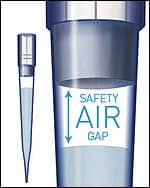As tissue slides are more routinely digitized to aid interpretation, a software program whose design was led by the University of Michigan Health System is proving its utility.
In a new study, a program known as Spatially Invariant Vector Quantization (SIVQ) was able to separate malignancy from background tissue in digital slides of micropapillary urothelial carcinoma, a type of bladder cancer whose features can vary widely from case to case and that presents diagnostic challenges even for experts.
The findings by the University of Michigan (UM) and Rutgers University researchers were published online in Analytical Cellular Pathology ahead of print publication.
“Being able to pick out cancer from background tissue is a key test for this type of software tool,” says UM informatics fellow Jason Hipp, MD, PhD, who shares lead authorship of the paper with resident Steven Christopher Smith, MD, PhD. “This is the type of validation that has to happen before digital pathology tools can be widely used in a clinical setting.”
To test the software’s ability to identify cancer in a digital slide, a group of human pathologists first pinpointed the cancer by hand. Their work was then used as the gold standard for grading the program’s results. Researchers then systematically tested which settings within the program produced the most accurate results, which can serve as a blueprint for optimizing the software to detect other types of cancer and disease.
Digital tools like SIVQ can help pathologists to quickly, accurately, and efficiently identify features on a slide with just a few clicks, to quickly calculate the area of an irregularly shaped feature or to eliminate the slow and painstaking tallying of tiny elements.
Still, the authors stress that the program isn’t intended to replace the skill and art of human pathologists, but to provide an additional resource.
Unlike other pattern recognition software, SIVQ bases its matches on a set of concentric rings rather than the usual square block. This allows features to be identified no matter how they’re rotated or whether they’re flipped, as in a mirror.
Source: University of Michigan Health System




